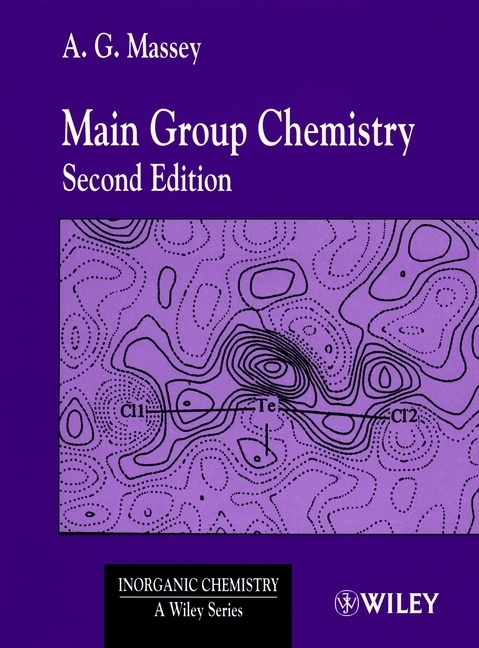
Main Group Chemistry
John Wiley & Sons Ltd (Verlag)
978-0-471-49037-1 (ISBN)
- Titel ist leider vergriffen;
keine Neuauflage - Artikel merken
Lately, there has been much interest in the chemistry of Main Group elements with novel compounds being synthesised both in academia and industry. This book examines their synthesis, structure and how they behave chemically. The second edition follows the same structure as the first except that thebiochemistry section has been removed to allow for the inclusion of a wide range of new material. This includes: complexation and the stabilization of unstable species; new elements and isotopes; discussion of, for example, pye-bonding in compounds of the heavier main group elements, electronegativity of F, bonding in sulfur and phosphorus oxo-anions examples of new compounds developed around traditional models; for example, compounds in which multiply-bonded C is replaced by Si and pentavalent organo-derivatives of Group 15 All other information is fully revised and updated in the light of more recent data. Where relevant, the author indicates where gaps exist in current knowledge and offers non-typical examples which are at the limits of current research.
The new edition is aimed at Honors and postgraduate students as well as researchers interested in Main Group elements and their compounds. On the first edition - "This is a book I would recommend as background reading for undergraduates and postgraduates" Education in Chemistry, Chemistry in Britain "This is a sound and sensible book, coherently produced and well written" The Times Higher Educational Supplement
Introduction. The Periodic Table. Hydrogen. Group 1: The Alkali Metals - Lithium, Sodium, Potassium, Rubidium, Cesium and Francium. Group 2: Beryllium, Magnesium, Calcium, Strontium, Barium and Radium. Group 12: Zinc, Cadmium and Mercury. Group 13: Boron, Aluminum, Gallium, Indium and Thallium. Group 14: Carbon, Silicon, Germanium, Tin and Lead. Group 15: The Pnictides - Nitrogen, Phosphorus, Arsenic, Antimony and Bismuth. Group 16: The Chalcogens - Oxygen, Sulfur, Selenium, Tellurium and Polonium. Group 17: The Halogens - Fluorine, Chlorine, Bromine, Iodine and Astatine. Group 18: The Rare Gases - Helium, Neon, Argon, Krypton, Xenon and Radon. Solution Chemistry. Steric Effects in Inorganic Chemistry. Appendix A: Common Crystal Structures. Appendix B: Comparison of Main Group and 3d Transition Metal Cations. Appendix C: Brief Summary of Main Group Chemistry. Appendix D: Slef-assessment Questions. Appendix E: Suggested Further General Reading. Index.
| Erscheint lt. Verlag | 27.10.2000 |
|---|---|
| Reihe/Serie | Inorganic Chemistry S. |
| Zusatzinfo | Ill. |
| Verlagsort | Chichester |
| Sprache | englisch |
| Maße | 193 x 252 mm |
| Gewicht | 1180 g |
| Einbandart | gebunden |
| Themenwelt | Naturwissenschaften ► Chemie ► Anorganische Chemie |
| ISBN-10 | 0-471-49037-7 / 0471490377 |
| ISBN-13 | 978-0-471-49037-1 / 9780471490371 |
| Zustand | Neuware |
| Haben Sie eine Frage zum Produkt? |
aus dem Bereich


